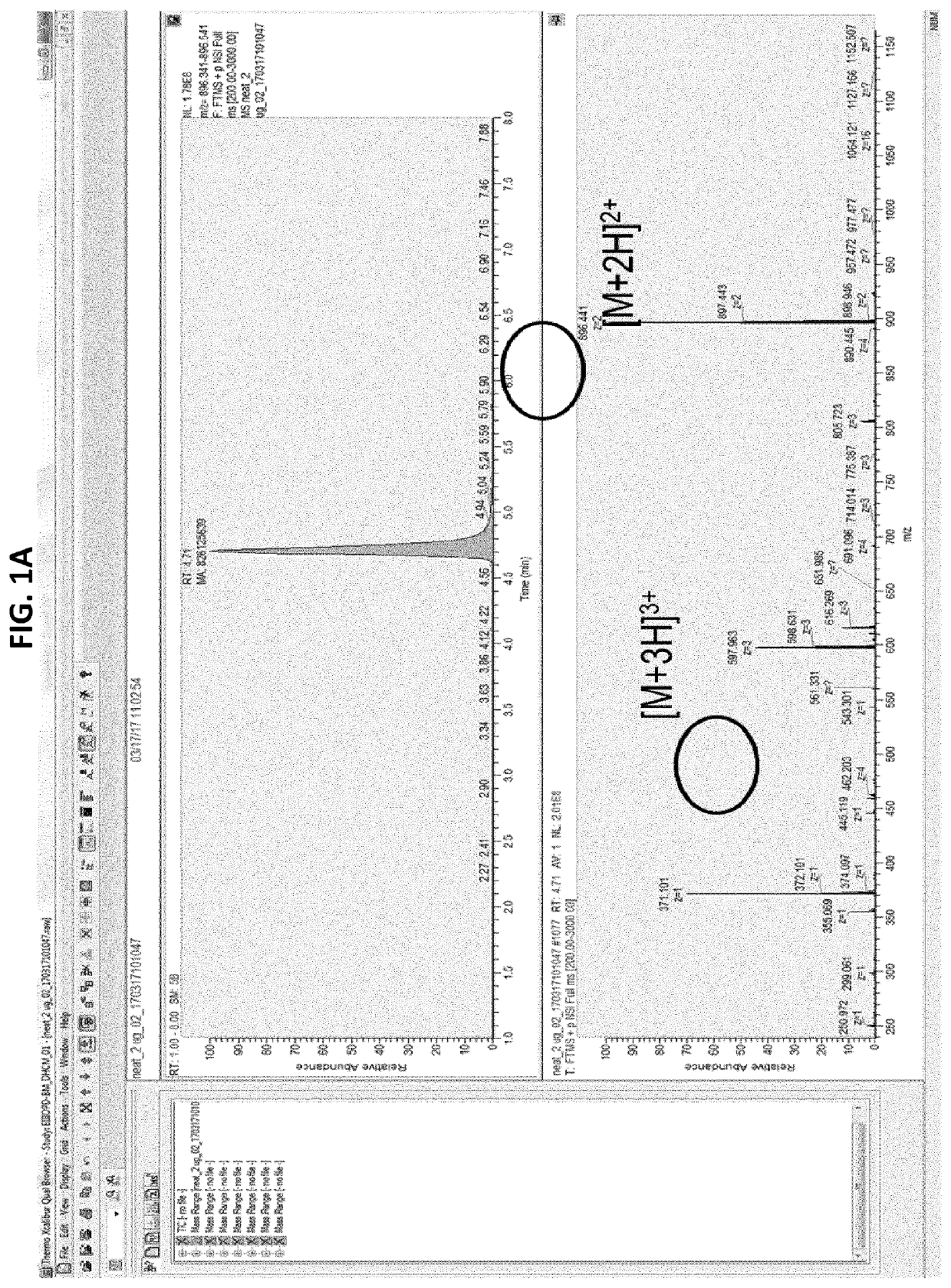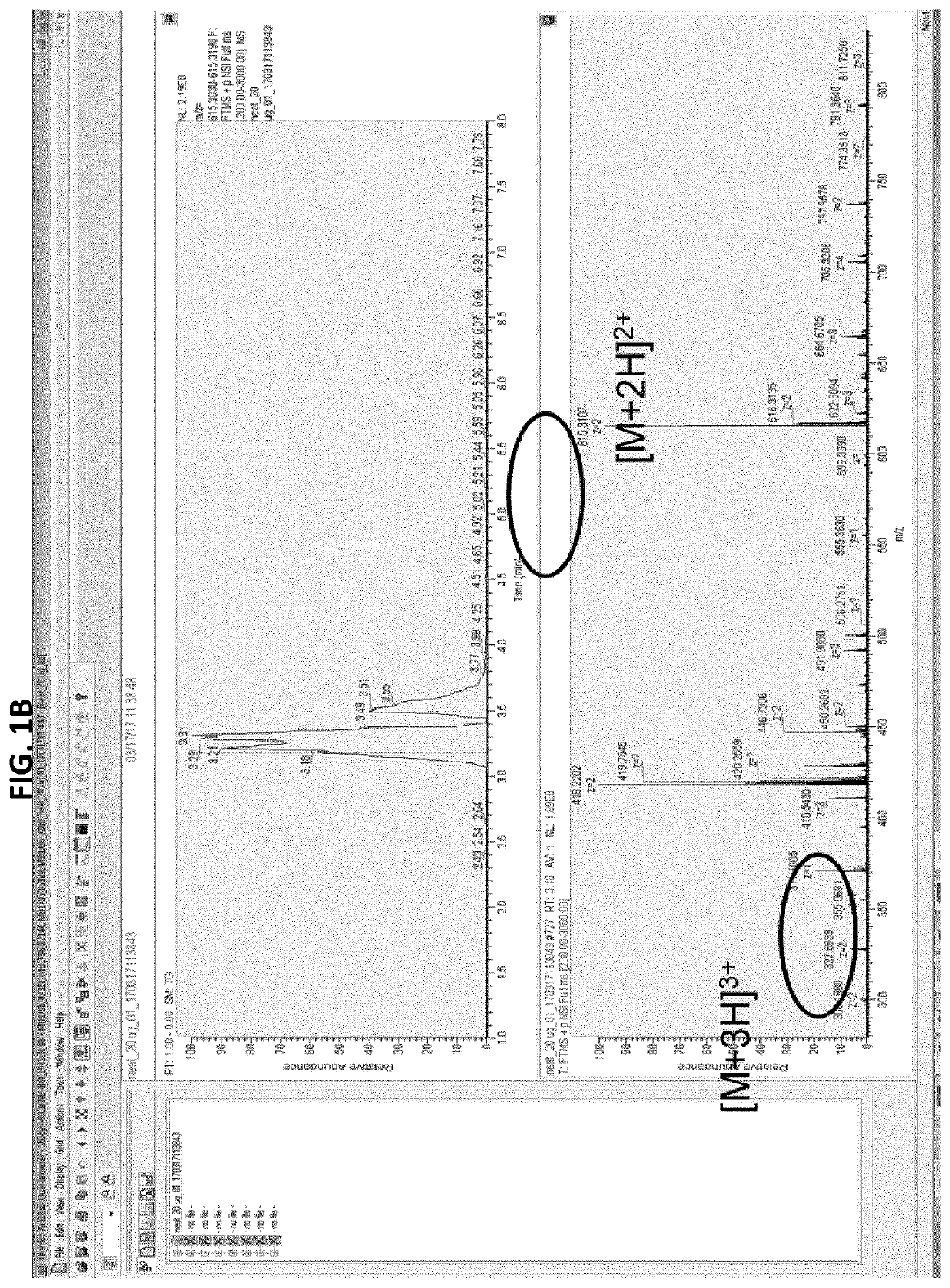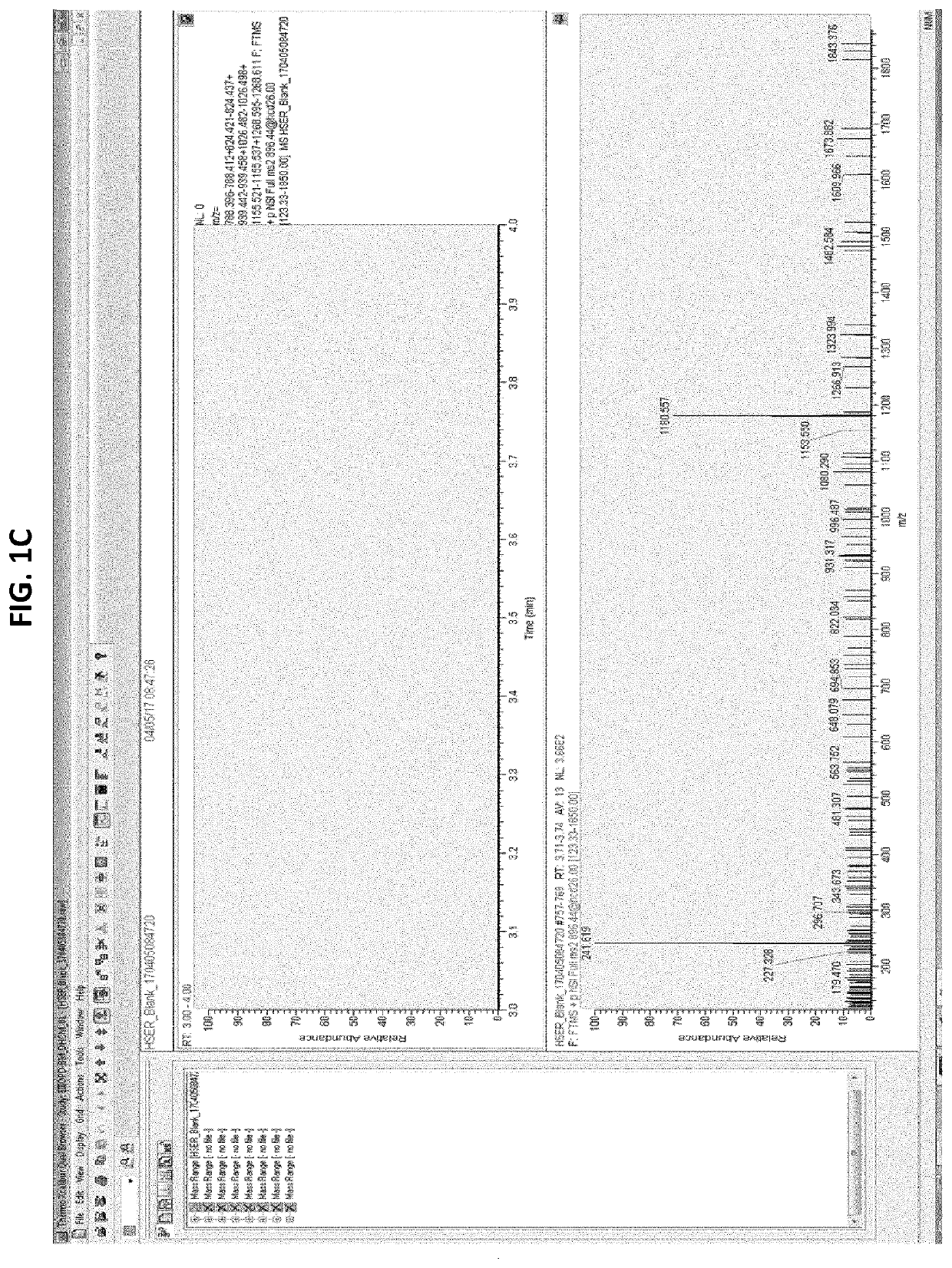Antibody quantification in biological samples
- Summary
- Abstract
- Description
- Claims
- Application Information
AI Technical Summary
Benefits of technology
Problems solved by technology
Method used
Image
Examples
example 1
ation of a Unique Signature Peptide for Bispecific Antibody Quantification in Human or Non-Human Primate Serum
[0134]In a first approach, potential signature peptides for quantifying bispecific antibodies in human serum were selected using standard rules for selection: 6-15 aa; no chemical chemical reactive residues (Tryptophan (W), Methionine (M), Cysteine (C)); no inclusion of 2R, 2K and RK; no potential PTM (Tyrosine (Y), Threonine (T), Serine(S), Lysine (K)); preferably containing Proline (P); R in P proximity (potential missed tryptic cleavage). Based on these rules, 15 signature peptides (SPs) were selected in human serum spiked with GBR 1302. Two peptides LYSGVPSR (SEQ ID NO: 8) and FTISADTSK (SEQ ID NO: 9) were selected for optimization based on their mass response intensities. It was observed that the selected signature peptides were present in the blank human serum as well as in GBR 1302 spiked human serum sample suggesting that they were not specific for GBR 1302.
[0135]In ...
example 2
itivity LC-HRMS / MS Assay for Bispecific Antibody Quantification in Human or Monkey Serum
[0142]A LC-HRMS / MS assay based on the detection of the unique signature peptide identified in example 1 was developed for bispecific antibody quantification in human or non-human primate serum. GBR 1302 was quantified in human serum based on MS analysis of the signature peptide SEQ ID NO: 4. GBR 1342 was quantified in monkey serum based on MS analysis of the signature peptide SEQ ID NO: 5. The steps of the assay are disclosed in details the materials and methods section. Briefly, bispecific antibody spiked in human or monkey serum was immunopurified using biotinylated anti-idiotype antibody and streptavidin coated immunomagnetic beads. Bispecific antibody internal standard (IS; stable-isotope-labeled (SIL) signature peptide) was added to immunopurified bispecific antibody before pretreatment with TCEP and iodoacetamide and trypsin digestion. Trypsin digest was then subjected to 2D Trap-Nano LC-Na...
example 3
inetics Studies of GBR1302 in Patients with Progressive HER2-Positive Solid Tumors
Material and Methods
[0146]To evaluate the pharmacokinetic of GBR1302 in adults with progressive HER2-positive solid tumors for which no standard or curative treatment is available, a phase 1, first-in-human, open-label, multicenter, dose-escalation study was carried. Subjects received intravenous GBR 1302 on Day 1 and Day 15 in 28-day treatment cycles at escalating dose levels, starting at 1 ng / kg. The first 4 cohorts consisted of a single subject; subsequent cohorts are being enrolled using a 3+3 design. Blood samples were collected for pharmacokinetic (PK) and antidrug antibody (ADA) analyses (secondary endpoints). Quantification of GBR 1302 serum concentrations (for PK) and detection / confirmation of anti GBR 1302 antibodies (for immunogenicity) were performed using validated LC / MS / MS and ELISA methods, respectively. PK parameters were evaluated using standard non-compartmental methods.
[0147]The foll...
PUM
| Property | Measurement | Unit |
|---|---|---|
| Fraction | aaaaa | aaaaa |
| Density | aaaaa | aaaaa |
| Density | aaaaa | aaaaa |
Abstract
Description
Claims
Application Information
 Login to View More
Login to View More - R&D
- Intellectual Property
- Life Sciences
- Materials
- Tech Scout
- Unparalleled Data Quality
- Higher Quality Content
- 60% Fewer Hallucinations
Browse by: Latest US Patents, China's latest patents, Technical Efficacy Thesaurus, Application Domain, Technology Topic, Popular Technical Reports.
© 2025 PatSnap. All rights reserved.Legal|Privacy policy|Modern Slavery Act Transparency Statement|Sitemap|About US| Contact US: help@patsnap.com



